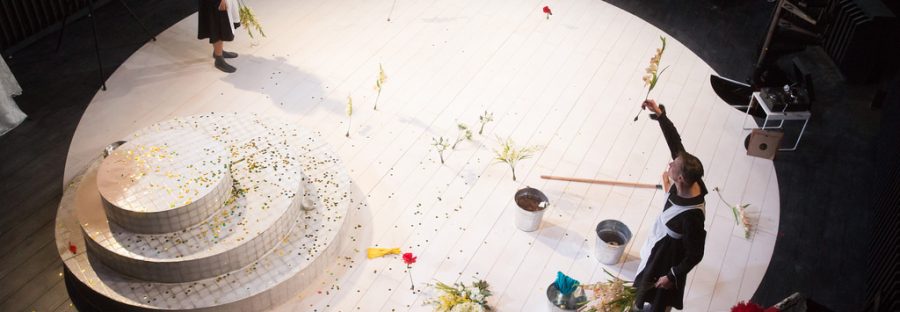Review: The Maids cast use their raw energy to keep audiences guessing how real the play is
- Based on the true story of the murderous Papin sisters
- A frantic performance of identity, passion and murder that leaves the audience unsure at what is real or make believe
- Now showing at HOME until the 1/12/2018
Self-described as a ‘deadly game of ritual, role-play and rubber gloves’, The Maids is a performance well ahead of its time as it toys around with the concepts of gender, sexuality and social inequality. Despite being first performed in 1947, its themes have never ceased to be relevant, especially in the present.
While recent versions of the play have starred the likes of Uzo Aduba, Zawe Ashton, Cate Blanchett and Isabelle Huppert, it was Genets original intention to have the roles played by men. Directed by Lily Sykes, a former freelance director from Germany, has cast Luke Mullins and Jake Fairbrother as sisters Solange and Clare, with Danny Lee Wynter playing the mistress.

The reconfigured auditorium of HOME used to host the performance was interesting to say the least, with screens on both sides of the circular stage showing quotes from Jean Genet. And before it began, the cast members walked among the audience in orange jumpsuits and stocking masks, referencing Genet’s life as a criminal who was incarcerated regularly.
Mullins and Fairbrother make a convincing play on the passion of the relationship between the sisters and the constant fluctuation between love and hate for each-other and their status is compelling to watch. Wynter, brought a selfish Mistress to life with charisma and flair that leaves the audience holding their breath when he is on stage. The cast, despite playing women, make no attempt to conceal their maleness.
After reading extensively about the play beforehand, I thought I was prepared for what I was going to watch, this was quickly proven wrong. As intriguing as the story of the sisters is, it’s really the raw and intense performance between Mullins and Fairbrother that brings the audience to heel. Afterwards, we’re left unsure at where the make-believe ended and reality began.


